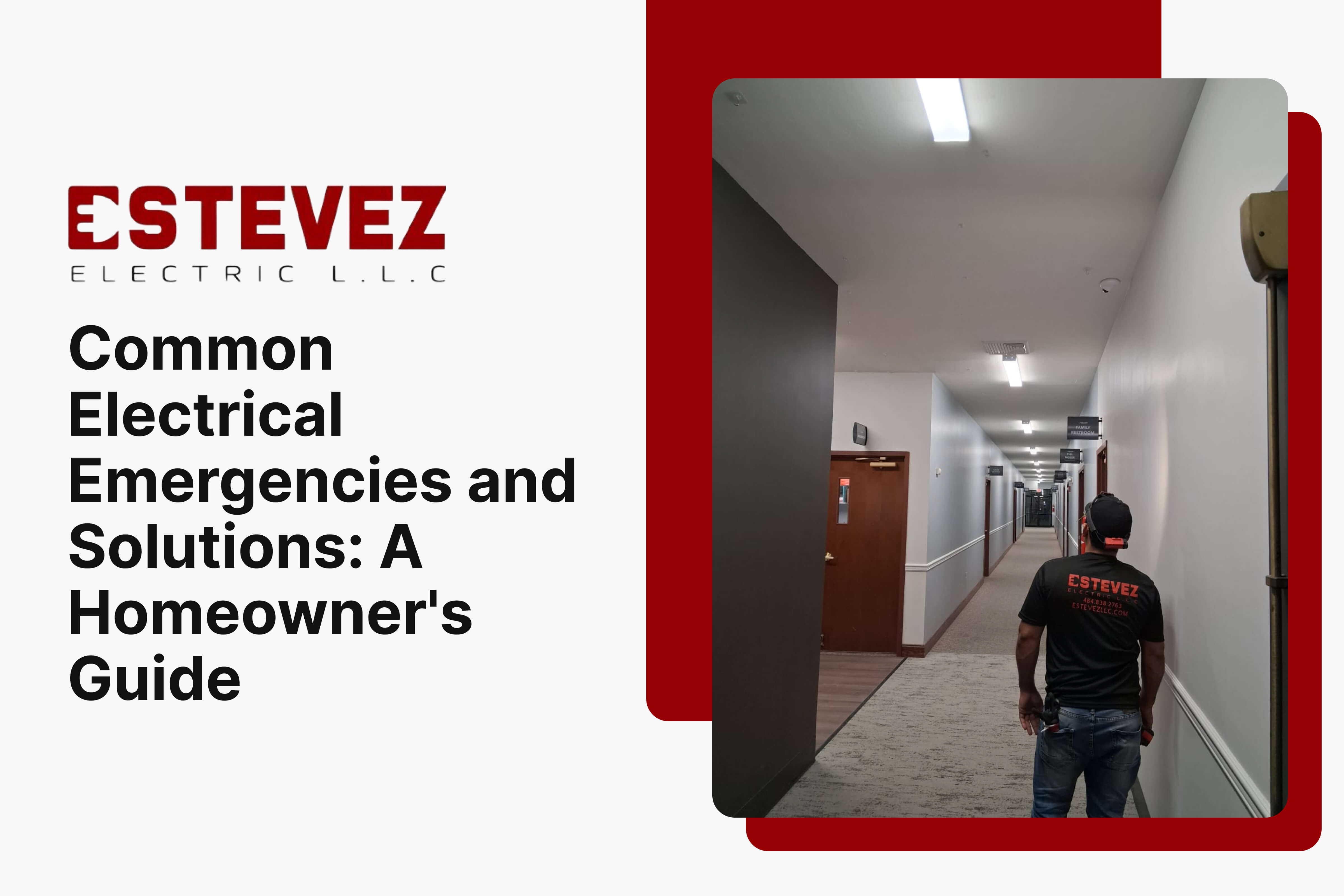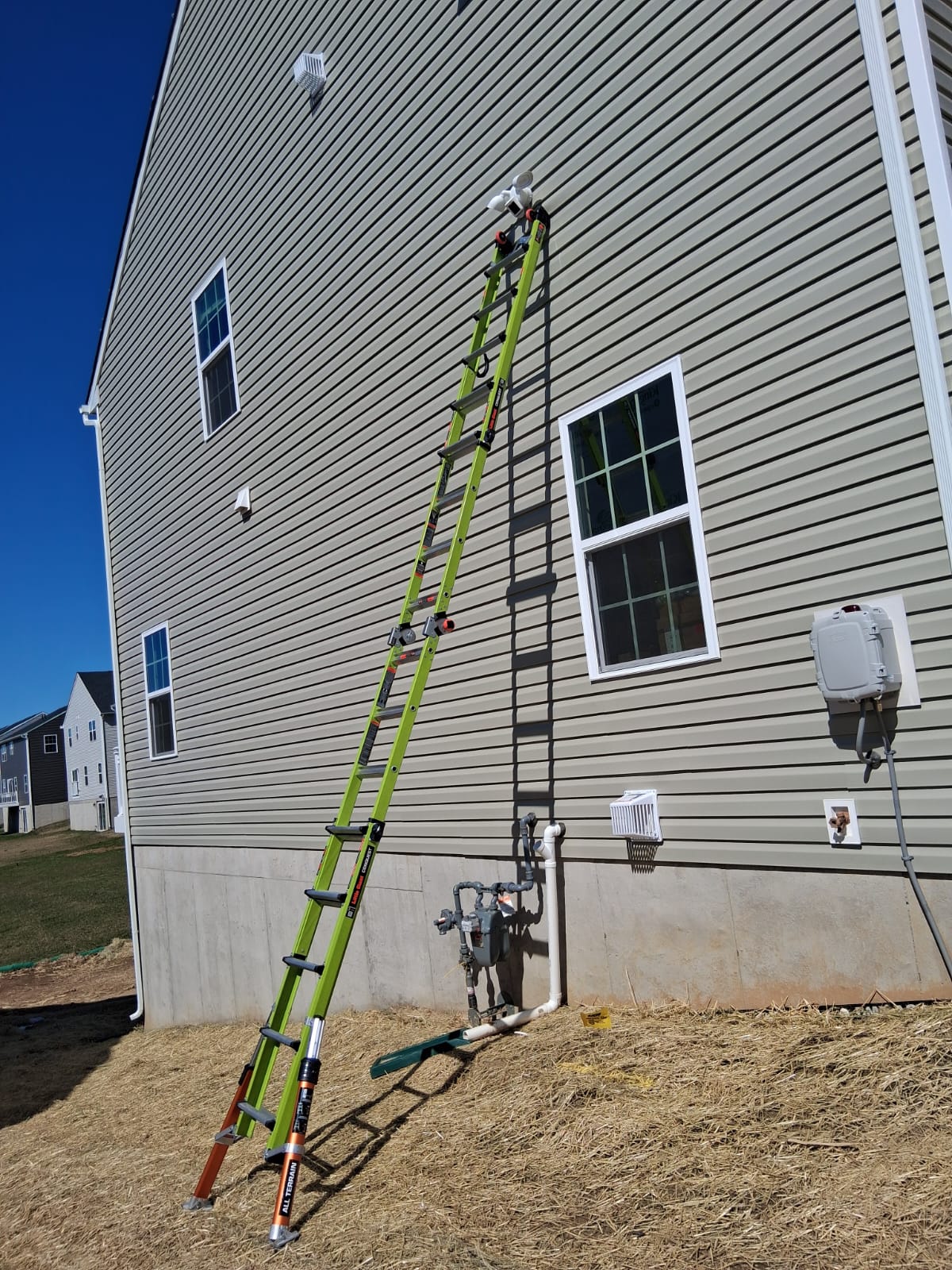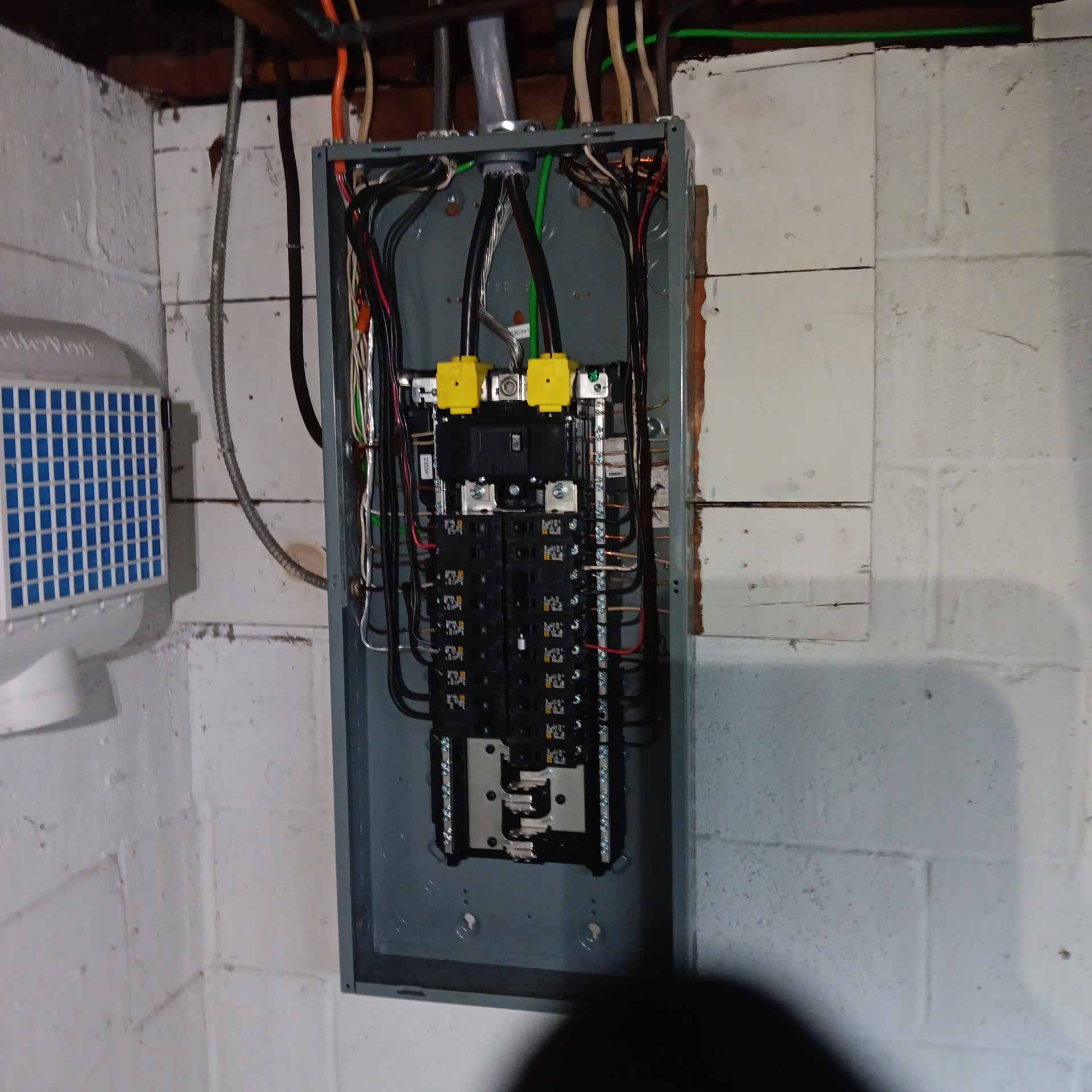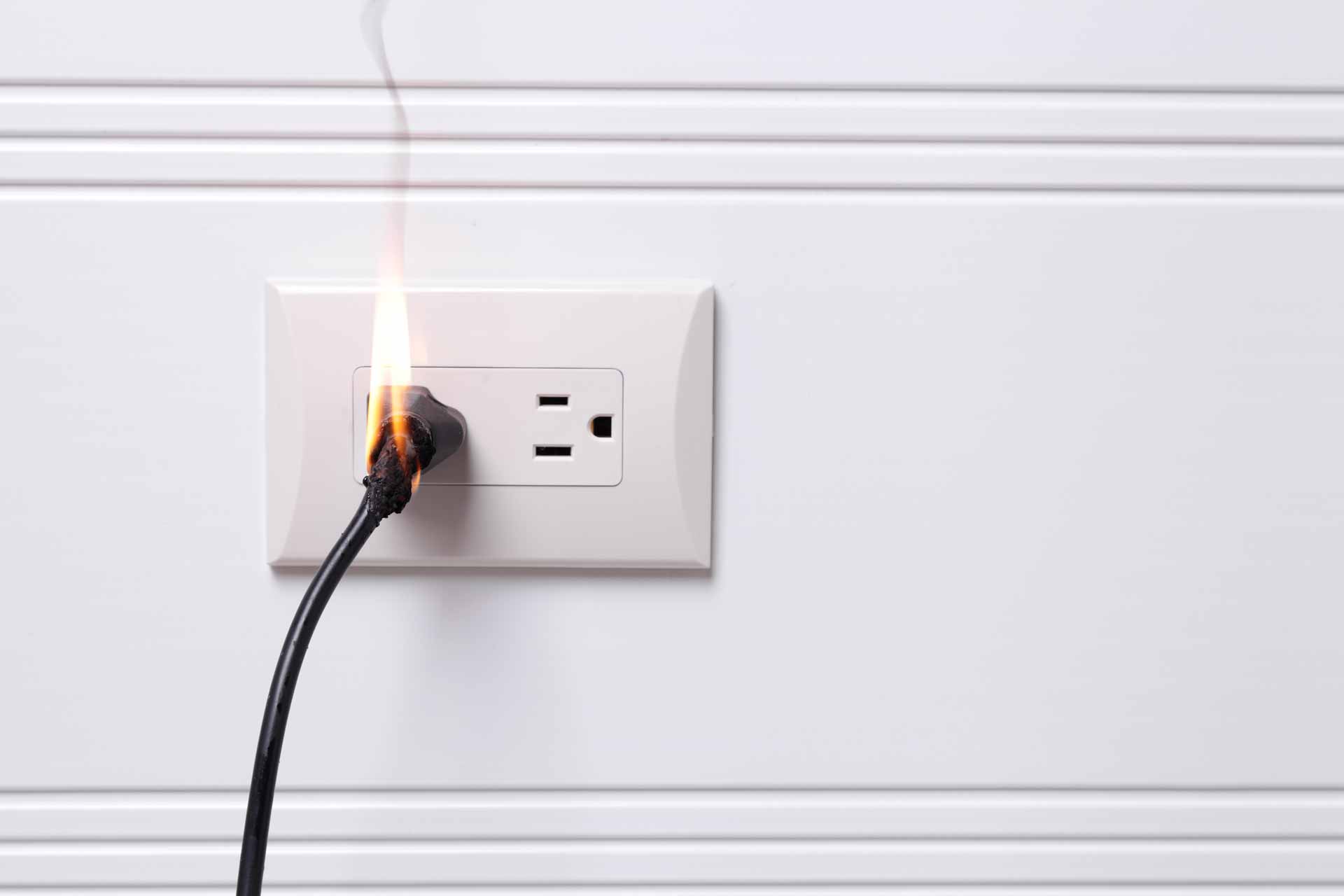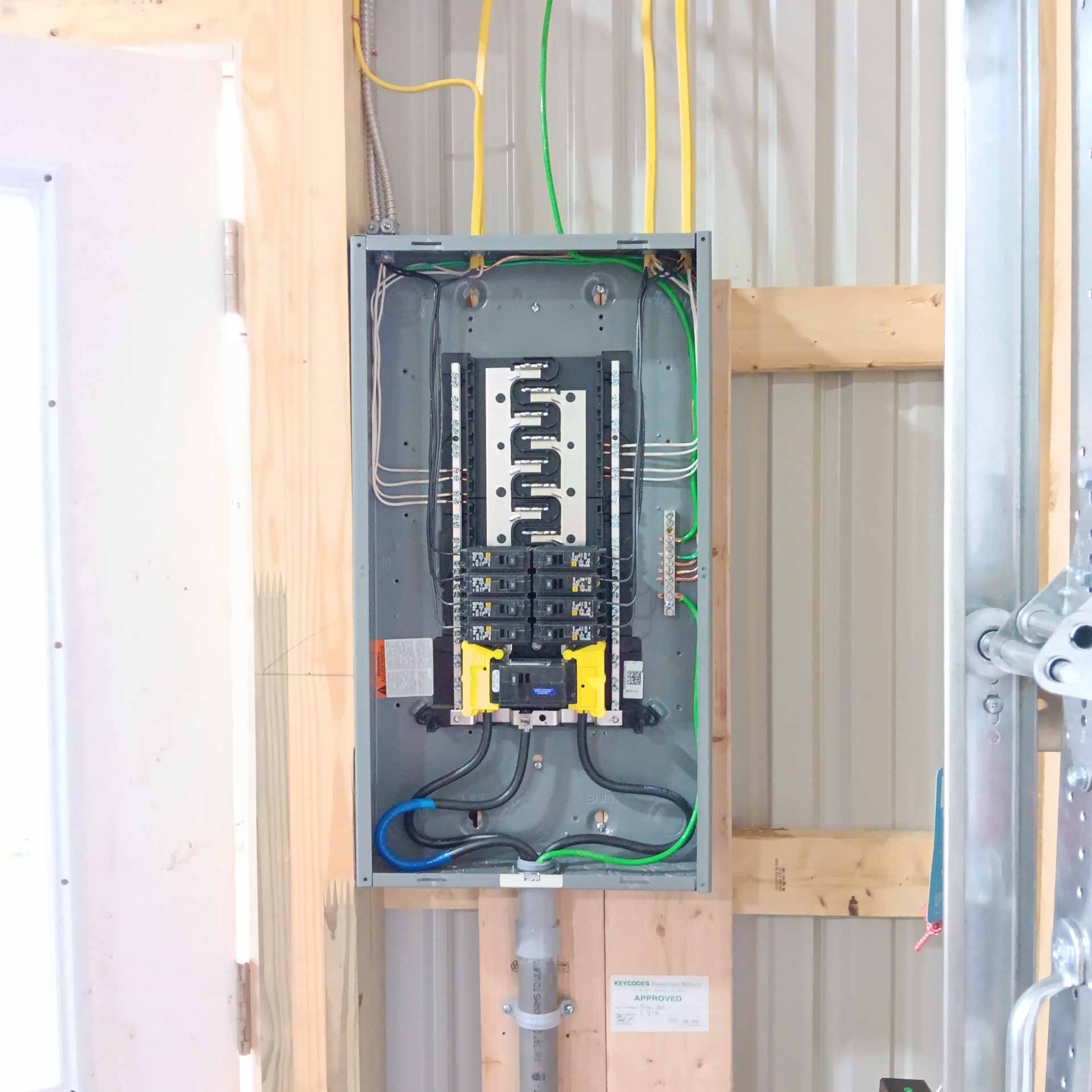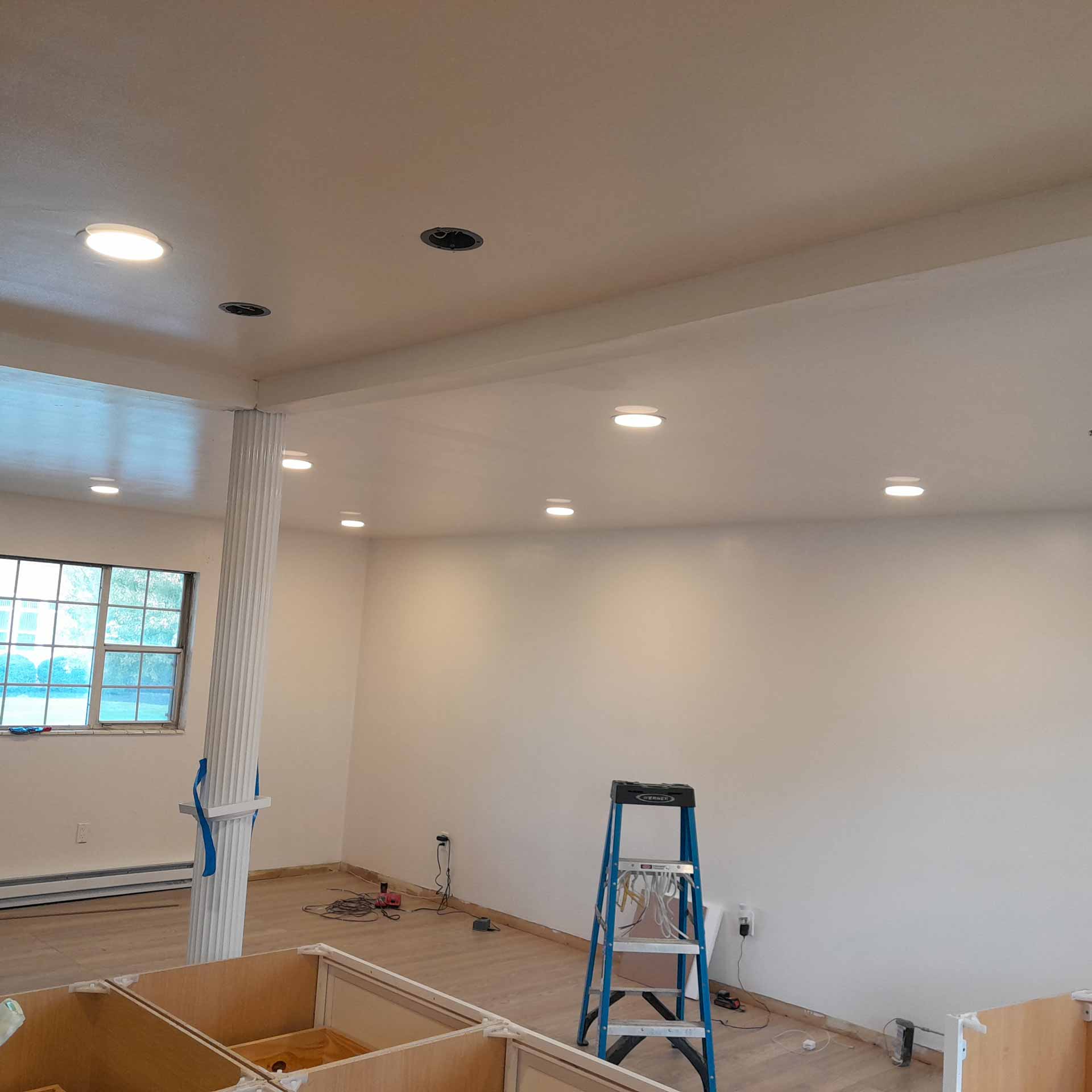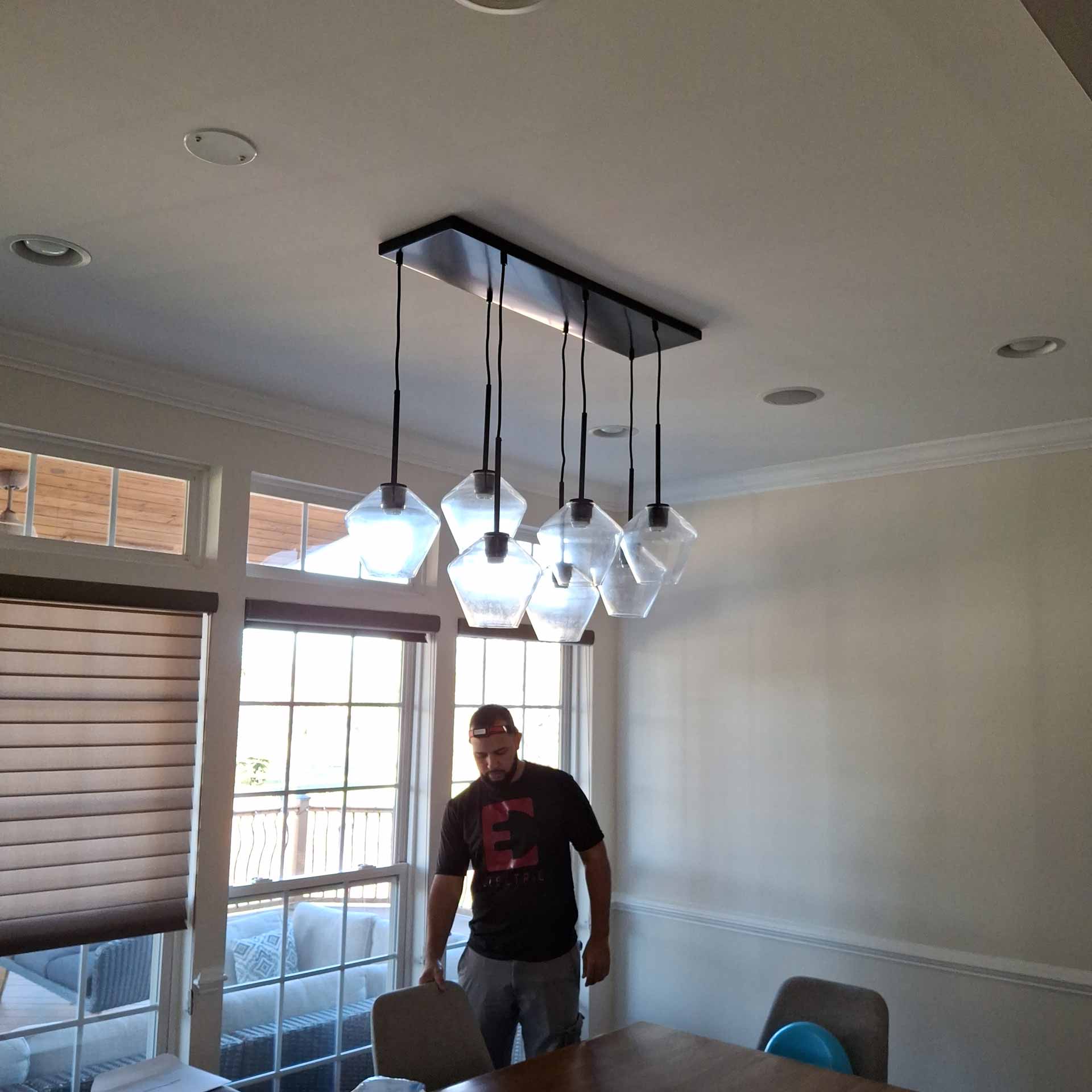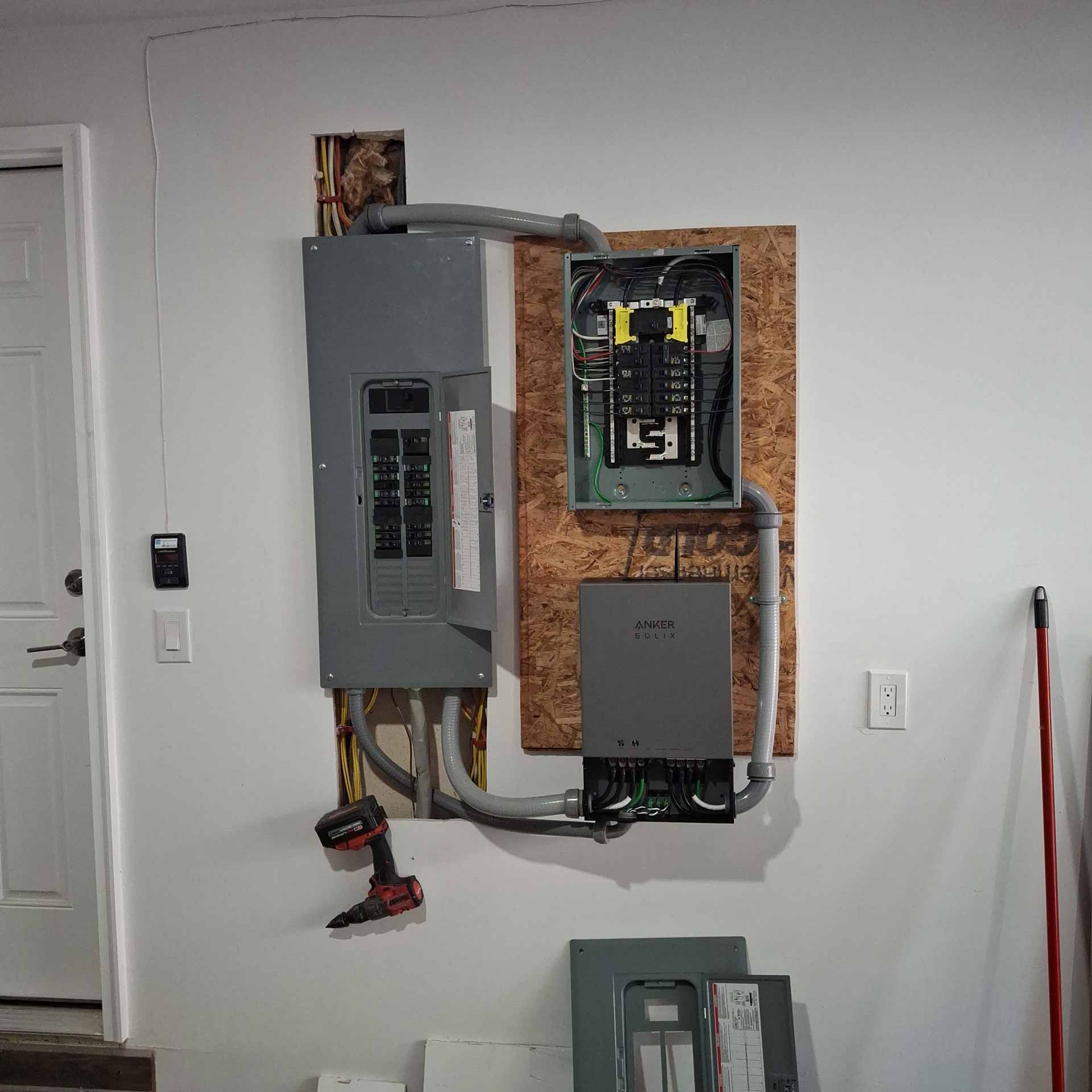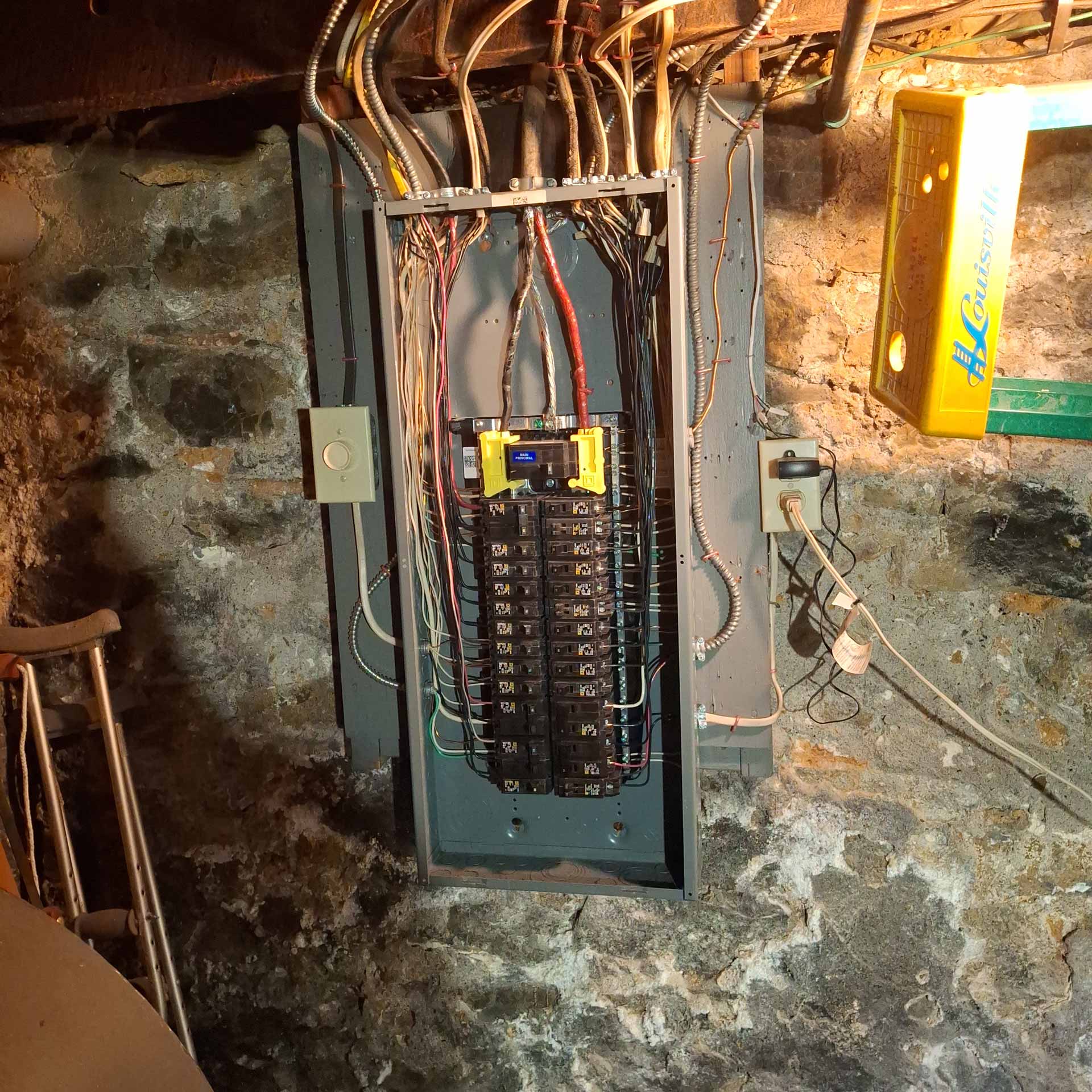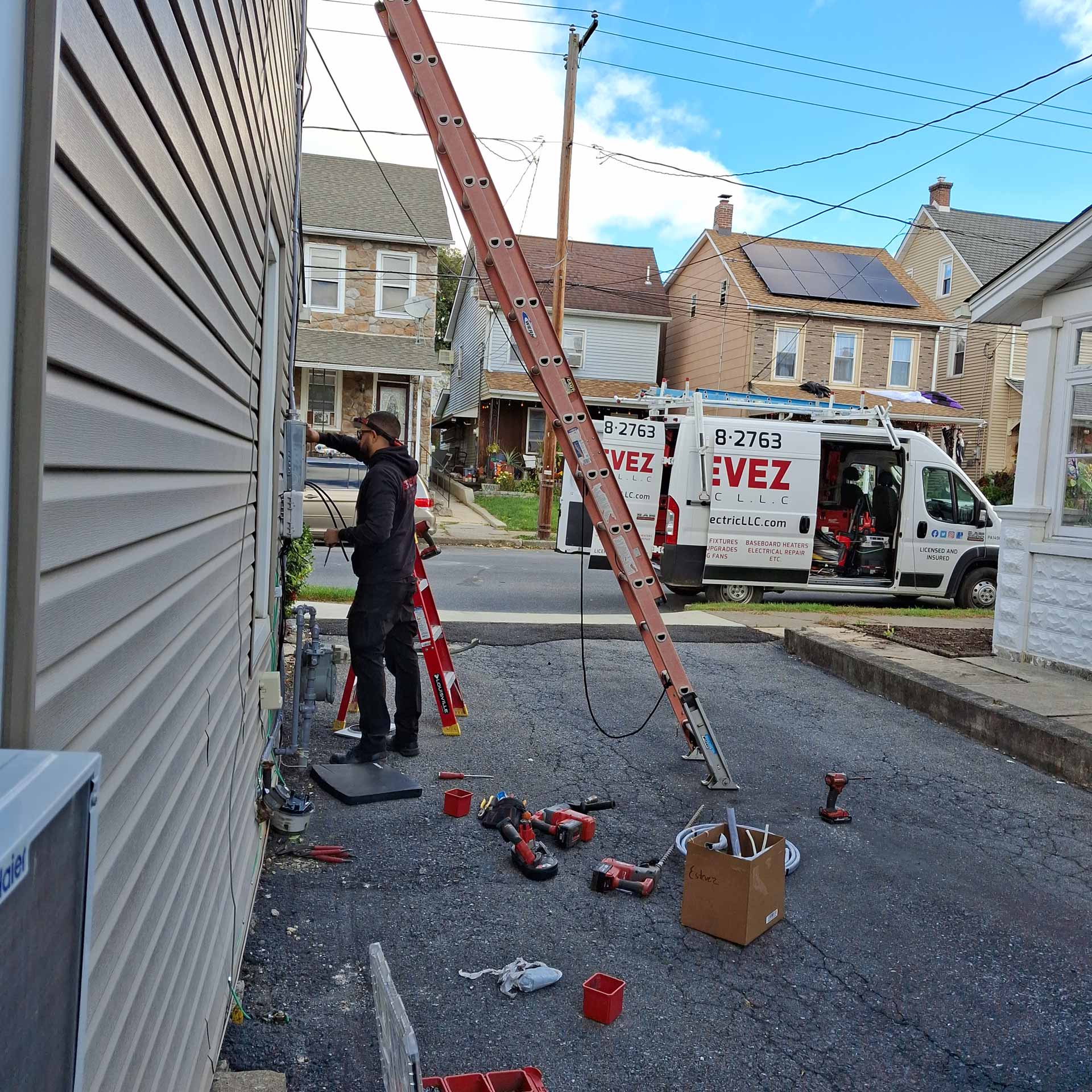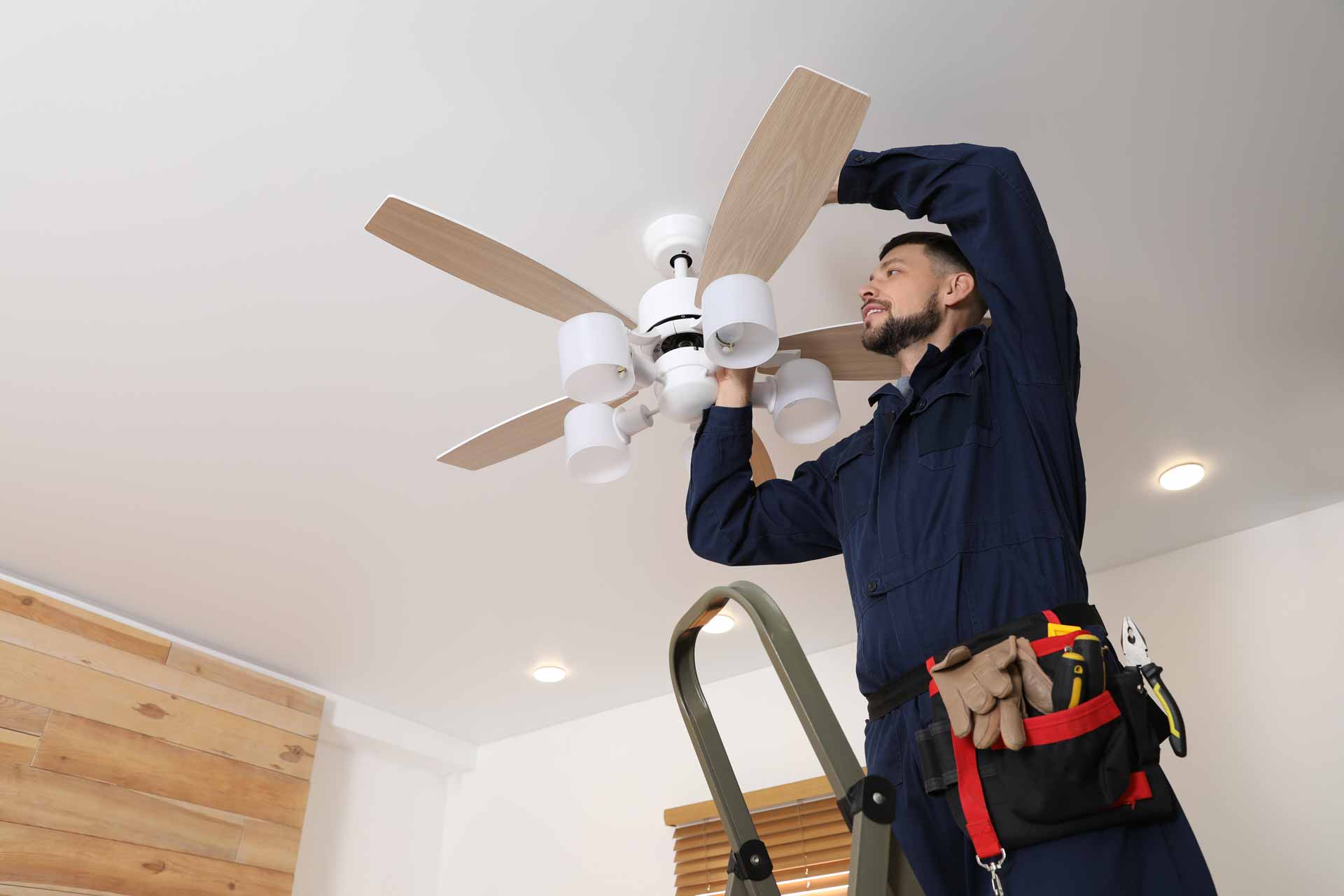What You’ll Learn:
- How to identify and respond to the most common electrical emergencies in homes
- Warning signs that indicate potential electrical problems
- DIY troubleshooting steps that are safe for homeowners to perform
- When to call a professional electrician for emergency services
- Preventative measures to avoid electrical emergencies
Key Takeaways:
- Electrical emergencies can occur in any home regardless of age and require immediate attention to prevent injuries and property damage
- Common electrical emergencies include power outages, tripping circuit breakers, electrical fires, flickering lights, and electrical shocks
- Warning signs like burning odors, buzzing sounds, hot outlets, and frequently tripped breakers should never be ignored
- Regular electrical inspections every 3-5 years can identify potential problems before they become dangerous emergencies
- Installing protective devices such as GFCIs, AFCIs, and whole-house surge protectors significantly reduces electrical hazards
- Know when to handle minor electrical issues yourself and when to call a licensed professional electrician
- Having an electrical emergency plan and preparedness kit helps ensure family safety during electrical incidents
Introduction: Understanding Electrical Emergencies in Your Home
Electrical emergencies can happen unexpectedly in any home, regardless of age or condition. When electrical systems malfunction, they can create dangerous situations that threaten both your family’s safety and your property. From power outages and tripped circuit breakers to more serious issues like electrical fires, knowing how to respond quickly and appropriately can make all the difference in preventing injuries and minimizing damage.
As homeowners, we often take our electrical systems for granted until something goes wrong. Modern homes rely heavily on electricity for everything from basic lighting to powering essential appliances and devices. This increased demand can sometimes strain older electrical systems that weren’t designed to handle today’s power requirements. Understanding the common warning signs of electrical problems and having a plan in place for emergencies is essential for every homeowner.
In this guide, we’ll walk you through the most common electrical emergencies that homeowners face, how to safely respond to them, and when it’s time to call in a professional emergency electrician. We’ll also share preventative measures that can help you avoid these situations altogether, saving you stress, money, and potential danger in the long run.
Common Electrical Emergencies in Residential Homes
1. Power Outages
Power outages are among the most common electrical emergencies that homeowners experience. While many outages are caused by utility company issues or severe weather conditions, localized outages that only affect your home may indicate more serious electrical problems that require immediate attention. Understanding the different types of power outages and how to respond appropriately is essential for maintaining safety during these situations.
When your home suddenly loses power, the first step is to determine whether the outage is affecting just your home or the entire neighborhood. If your neighbors still have power while your home is dark, the issue is likely with your home’s electrical system rather than the utility company. In this case, check your main electrical panel for tripped circuit breakers. If you find one that’s tripped, try resetting it by firmly pushing it to the “off” position first, then to the “on” position. If the breaker immediately trips again, there may be a short circuit or overloaded circuit that requires professional attention.
During extended power outages, it’s important to unplug sensitive electronics to protect them from potential power surges when electricity is restored. Keep refrigerator and freezer doors closed as much as possible to maintain cold temperatures. If you experience frequent outages, especially during normal weather conditions, it might be time to consider an electrical panel upgrade to better handle your home’s power demands. Modern panels provide improved protection and capacity for today’s electricity-dependent households.
2. Frequently Tripping Circuit Breakers
Circuit breakers are safety devices designed to trip and cut power when they detect an overload or short circuit, protecting your home from potential electrical fires. While occasional tripping might happen when too many high-power devices run simultaneously on the same circuit, frequent tripping indicates a more serious problem that shouldn’t be ignored. Understanding why your breakers keep tripping is the first step toward resolving this common electrical emergency.
The most common causes of frequently tripping breakers include overloaded circuits (too many devices drawing power from one circuit), short circuits (damaged wiring causing improper connections), ground faults (current leaking to ground due to moisture or damage), aging or damaged circuit breakers, and outdated electrical panels that can’t handle modern power demands. If you find yourself constantly resetting the same breaker, it’s a clear warning sign that your electrical system needs professional attention rather than just a quick fix.
To address this issue, start by identifying which appliances or devices are connected to the problematic circuit and try redistributing high-power items to different circuits. If the problem persists, it’s time to call a professional for circuit breaker replacement or a thorough electrical inspection. In many older homes, the electrical panel may no longer be adequate for today’s power-hungry appliances and devices, making an electrical panel upgrade necessary to prevent ongoing issues and potential safety hazards.
3. Electrical Fires
Electrical fires are among the most dangerous electrical emergencies and require immediate action. According to the National Fire Protection Association, electrical failures or malfunctions are the second leading cause of home fires in the United States, resulting in hundreds of deaths and over a billion dollars in property damage annually. These fires often start silently within walls or electrical panels before becoming visible, making them particularly dangerous.
The most common causes of electrical fires include faulty outlets or appliances, outdated wiring, improper use of extension cords, and overloaded circuits. Warning signs that might precede an electrical fire include discolored or warm wall outlets, burning odors, frequently blowing fuses or tripping circuit breakers, and flickering or dimming lights. If you notice any of these warning signs, it’s crucial to have your electrical system inspected by a professional before a fire occurs.
If you suspect an electrical fire, your first priority should be safety. If safe to do so, turn off power at the circuit breaker. Never use water on an electrical fire – instead, use a Class C fire extinguisher specifically designed for electrical fires. If the fire is spreading or you don’t have an appropriate extinguisher, evacuate immediately and call 911 from a safe location. After the emergency is resolved, have a licensed electrician inspect your electrical system before restoring power to prevent the fire from recurring.
4. Flickering or Dimming Lights
While occasionally flickering lights might seem like a minor annoyance, they often signal underlying electrical problems that shouldn’t be ignored. Persistent flickering can indicate loose wiring connections, overloaded circuits, or issues with your home’s main electrical service. These problems can worsen over time and potentially lead to more serious electrical emergencies if not addressed promptly.
When troubleshooting flickering lights, first determine if the issue affects a single light fixture or multiple lights throughout your home. For a single fixture, the problem might be as simple as a loose bulb or a defective fixture that can be easily replaced. However, if multiple lights flicker, especially when using high-power appliances like air conditioners or microwaves, you may have an overloaded circuit or a more serious wiring issue. Flickering throughout the house could indicate problems with your main electrical service or utility company supply.
For persistent flickering despite simple fixes, it’s important to consult with a professional electrician who can properly diagnose the issue. They can check for loose connections, verify proper grounding, and ensure your electrical panel has sufficient capacity for your home’s needs. Learn more about the causes and solutions for this common issue in our detailed guide on flickering lights and how to address them before they develop into more serious electrical emergencies.
5. Electrical Shocks from Appliances or Outlets
Receiving an electrical shock from an appliance, outlet, or switch is never normal and always indicates a problem that requires attention. Even minor shocks can signal dangerous wiring issues that could lead to more serious injuries or electrical fires if left unaddressed. Understanding why these shocks occur and how to respond can help protect your family from this common electrical hazard.
Electrical shocks typically happen when there’s a fault in an appliance or in your home’s wiring that allows electricity to flow where it shouldn’t. Common causes include damaged wiring, water exposure, or improper grounding. If you experience a shock when touching an appliance or outlet, stop using it immediately and turn off power to the affected circuit at your breaker panel. Check for obvious signs of damage like burn marks or discoloration, but never attempt to use or repair damaged electrical equipment yourself.
For appliance-related issues, our guide on troubleshooting common electrical issues with home appliances may help identify the problem. However, any shock incident warrants a call to a licensed electrician who can properly diagnose and repair the underlying issue. They may recommend installing Ground Fault Circuit Interrupter (GFCI) outlets in areas where water might be present, or a whole-house surge protector installation to protect both your family and your valuable electronics from power surges and electrical faults.
Warning Signs of Potential Electrical Emergencies
Identifying electrical problems before they become emergencies can save you from dangerous situations and costly repairs. Being aware of the warning signs allows you to address issues early, before they escalate into serious hazards. Here are the key warning signs every homeowner should recognize:
1. Burning Odors or Discoloration
A burning smell (often described as fishy or similar to burning plastic) coming from outlets, switches, or your electrical panel is a serious warning sign that should never be ignored. This odor typically indicates that wiring insulation is melting or burning, which can quickly lead to an electrical fire if not addressed immediately. The smell occurs because the protective insulation around wires is overheating, releasing distinctive chemical odors before it potentially ignites.
Similarly, discoloration around outlets or switches—such as yellow, brown, or black marks—suggests that heat damage has already occurred. These visual signs often accompany burning odors and indicate that components have been subjected to excessive heat over time. This overheating can be caused by loose connections, overloaded circuits, or damaged wiring. If you notice these warning signs, you should turn off power to the affected area immediately at your circuit breaker, avoid using the outlet or switch, and contact an emergency electrician right away for a thorough inspection and repair.
2. Buzzing or Humming Sounds
Electrical systems should operate silently. Buzzing, humming, or crackling sounds from outlets, switches, or your electrical panel indicate loose connections, arcing electricity, or failing components. These sounds aren’t just annoying—they’re warning you of potentially dangerous conditions developing within your electrical system that could lead to fires or system failures if not addressed promptly.
The buzzing sound typically comes from electricity “jumping” across gaps in connections, creating heat and potentially igniting surrounding materials. This arcing can occur due to loose wire connections, damaged outlets, or problems within your electrical panel. If you hear these sounds, it’s important to turn off power to the affected circuit, avoid using the problematic outlet or switch, and schedule an inspection with a licensed electrician to identify and fix the issue before it develops into a serious electrical emergency.
3. Hot Outlets or Switch Plates
While electrical components may feel slightly warm during normal operation, they should never be hot to the touch. Excessively hot outlets, switches, or electrical panels indicate dangerous overloading or faulty wiring that requires immediate attention. This excessive heat can melt wire insulation, damage components, and eventually cause fires if the underlying issue isn’t resolved.
When an outlet or switch feels uncomfortably warm, it’s often because the circuit is carrying more current than it was designed to handle, or because there’s a loose connection creating resistance and generating heat. To address this issue, you should unplug any devices from the hot outlet, turn off the circuit at your breaker panel, and have an electrician inspect the wiring and connections as soon as possible. In many cases, especially in older homes, this may indicate that you need an electrical panel upgrade if your system is consistently overloaded by modern appliances and devices.
4. Frequently Blown Fuses or Tripped Breakers
As mentioned earlier, circuit breakers and fuses are safety devices designed to interrupt electrical flow when problems are detected. Occasional tripping due to obvious overloads (like running too many appliances simultaneously) is normal. However, if breakers trip or fuses blow frequently without apparent cause, this indicates underlying electrical problems that need professional attention.
Frequent tripping can be caused by overloaded circuits that are unable to handle normal household demands, short circuits from damaged wiring, ground faults where electricity is leaking from the intended path, or aging and failing electrical panel components. These issues won’t resolve themselves and typically worsen over time, potentially leading to more serious electrical emergencies. If you’re experiencing this problem, it’s worth reading our article on 12 clear signs you need an electrical panel upgrade to determine if your home’s electrical system is due for modernization.
5. Water Near Electrical Systems
Water and electricity create an extremely dangerous combination that should be treated as an emergency situation. Water exposure to electrical systems can cause short circuits and system damage, significantly increase the risk of electrical fires, create severe shock or electrocution hazards, and lead to corrosion and deterioration of electrical components over time.
If you discover water leaking near outlets, electrical panels, or appliances, your first priority should be safety. If it’s safe to do so, turn off power at the main breaker. Never touch electrical equipment or water around it until power is off. After addressing the water source (such as a burst pipe, leak, or flooding), have a professional electrician inspect the system before restoring power. They can assess the extent of water damage to your electrical system and make necessary repairs to ensure it’s safe to use again.
Safe Response Procedures for Electrical Emergencies
When facing an electrical emergency, knowing how to respond quickly and safely can prevent injuries and minimize damage. Having a clear plan of action helps you stay calm and make good decisions during what can be a stressful situation. Here are the essential steps to take during common electrical emergencies:
Emergency Response Checklist:
- Ensure personal safety first
- Disconnect power when possible and safe to do so
- Assess the situation from a safe distance
- Call emergency services if needed (911)
- Contact a licensed electrician for professional assistance
- Document damage for insurance purposes
- Avoid using affected electrical systems until professionally inspected
Responding to Electrical Fires
Electrical fires require specific response procedures that differ from other types of fires. Understanding these differences can be life-saving in an emergency situation. The most important thing to remember is that water and electricity don’t mix—using water on an electrical fire can spread the fire or cause electrocution. Instead, if you have access to a Class C fire extinguisher specifically rated for electrical fires, use it by aiming at the base of the flames. If a Class C extinguisher isn’t available, a multipurpose ABC extinguisher will also work.
If safe to do so, cut power to the affected area by turning off the circuit breaker or unplugging the device if you can reach the plug without touching flames or going through smoke. For small, contained fires within an appliance where you’ve cut the power, you can sometimes smother them with baking soda (never use flour, which can explode). However, if the fire is growing or you cannot safely extinguish it, the priority becomes evacuation—get everyone out of the home immediately and call 911 from outside. After an electrical fire, even a small one that you managed to extinguish, have your electrical system thoroughly inspected by a licensed electrician before restoring power or using affected circuits.
Handling Power Outages Safely
Power outages can range from minor inconveniences to serious emergencies, depending on the circumstances and duration. Being prepared for outages helps ensure your family’s comfort and safety until power is restored. Start by keeping emergency supplies accessible, including flashlights, battery-powered radios, and fully charged power banks for mobile phones. Avoid using candles when possible, as they present fire hazards, especially in homes with children or pets.
When the power goes out, turn off and unplug sensitive electronics to protect them from potential power surges when electricity is restored. Check your circuit breaker panel to determine if the outage is limited to your home or affects the broader area. If only part of your home is affected, you may have a tripped breaker or more serious electrical issue requiring professional attention. For whole-house outages, report the outage to your utility company and listen for updates about restoration times.
If you use a generator during an outage, never operate it indoors or in enclosed spaces due to carbon monoxide dangers. Also, never attempt to connect generators directly to your home’s wiring without proper transfer switches installed by a licensed electrician, as this can create dangerous backfeed that puts utility workers at risk. After power is restored, turn devices back on one at a time to avoid overloading the system.
What to Do if Someone Receives an Electrical Shock
Electrical shocks can cause injuries ranging from minor burns to cardiac arrest. Knowing how to respond can save lives in these frightening situations. The first priority is always safety—do not touch the person if they are still in contact with the electrical source, as you could also be shocked. Instead, turn off power at the circuit breaker or unplug the device if safe to do so.
If you cannot turn off the power, use a non-conductive object like a wooden broom handle or plastic chair to separate the person from the electrical source. Once they’re no longer in contact with electricity, check for breathing and pulse. If they’re unresponsive or not breathing normally, call 911 immediately and begin CPR if you are trained to do so. Even if the person appears fine after a shock, medical attention is still important, as electrical shocks can cause internal damage that isn’t immediately visible.
While waiting for emergency services, treat visible burns with cool (not cold) water and cover with a clean, dry cloth. Do not apply creams, ointments, or adhesive bandages to electrical burns, as these can complicate treatment. Keep the person warm and comfortable, and monitor their condition until help arrives.
Preventative Measures to Avoid Electrical Emergencies
The best way to handle electrical emergencies is to prevent them from happening in the first place. By implementing these preventative measures, you can significantly reduce your risk of experiencing dangerous electrical situations and protect both your family and your home.
1. Schedule Regular Electrical Inspections
Having your home’s electrical system professionally inspected every 3-5 years (or more frequently for older homes) can identify potential problems before they become emergencies. These inspections are particularly important if your home is more than 25 years old, as aging electrical systems are more prone to failures and may not meet current safety standards. A professional inspection should include checking for outdated or damaged wiring, ensuring proper grounding throughout the system, testing outlets and GFCI protection, inspecting the electrical panel for signs of overheating or damage, and verifying that your system meets current electrical codes.
Regular inspections are an investment in your home’s safety and can save you money in the long run by identifying small issues before they become major problems requiring expensive emergency repairs. They’re also a good opportunity to discuss any concerns you might have about your electrical system with a professional who can provide personalized advice. If you’ve noticed any of the warning signs we’ve discussed, check out our guide to warning signs your home needs rewiring to help you identify when it’s time for a more thorough evaluation.
2. Install Protective Devices
Modern electrical safety devices can provide additional layers of protection against common electrical hazards, significantly reducing the risk of fires, shocks, and damage to expensive electronics. These devices have become increasingly sophisticated and effective, making them essential components of a safe home electrical system.
Professional surge protector installation at your electrical panel can protect your entire home from damaging power surges caused by lightning strikes or utility company issues. Unlike plug-in surge protectors that only protect individual devices, whole-house surge protection safeguards all electronics and appliances connected to your electrical system.
Ground Fault Circuit Interrupters (GFCIs) are specialized outlets that detect imbalances in electrical current and quickly shut off power to prevent shock hazards. They’re required by code in areas where water is present, such as kitchens, bathrooms, garages, and outdoor outlets. If your home doesn’t have these important safety devices in wet areas, installing them should be a priority.
Arc Fault Circuit Interrupters (AFCIs) are advanced circuit breakers that detect dangerous electrical arcs that can cause fires and shut off power before damage occurs. They’re particularly important in bedrooms and living areas where electrical fires often start unnoticed. For homes with young children, tamper-resistant receptacles with built-in shutters that prevent foreign objects from being inserted provide an additional layer of protection against shock hazards.
3. Upgrade Outdated Electrical Systems
Older homes often have electrical systems that weren’t designed to handle modern power demands. The average home today uses far more electricity than homes did even 20-30 years ago, with multiple computers, entertainment systems, kitchen appliances, and other devices drawing power simultaneously. This increased demand can strain outdated electrical systems, leading to frequent problems and potential hazards.
Signs that your electrical system may need upgrading include frequent circuit breaker trips or blown fuses, two-prong outlets instead of three-prong grounded outlets, no GFCI protection in wet areas, aluminum wiring (common in homes built 1965-1973), knob-and-tube wiring (found in homes built before 1950), insufficient outlets leading to heavy use of extension cords, and service panels rated less than 100 amps.
Our electrical panel upgrade service can bring your home’s electrical system up to modern standards, increasing both safety and capacity. Most contemporary homes require at least 200-amp service to adequately power today’s appliances and electronics. Upgrading not only improves safety but also adds value to your home and provides the convenience of having sufficient power for all your needs without constant circuit overloads.
4. Practice Safe Electrical Habits
Many electrical emergencies result from unsafe practices that could easily be avoided with proper awareness and habits. By adopting these safe electrical practices, you can significantly reduce your risk of experiencing electrical emergencies in your home:
Never overload circuits with too many high-power devices. Spread out your appliances across different circuits, especially those that draw significant power like space heaters, air conditioners, and hair dryers. Avoid using extension cords as permanent wiring solutions—they’re designed for temporary use only and can overheat when used long-term. Instead, have additional outlets installed where needed.
Unplug appliances when not in use, especially when leaving home for extended periods. This not only saves energy but also eliminates the risk of electrical issues developing while you’re away. Keep electrical devices away from water sources, and never handle electrical equipment with wet hands or while standing in water. Replace damaged cords and plugs immediately rather than continuing to use them despite visible wear or damage.
Always follow manufacturer instructions for all electrical devices, and never modify electrical equipment in ways not intended by the manufacturer. Teach children about electrical safety from an early age, including the dangers of inserting objects into outlets or playing with cords and appliances. For more detailed guidance on safe electrical practices, check out our article on 12 essential home electrical repair tips for safety.
When to Call a Professional Electrician
While some minor electrical issues can be safely addressed by homeowners, many situations require professional expertise. Knowing when to call in a licensed electrician can prevent dangerous situations, ensure proper repairs, and save you money in the long run by avoiding bigger problems. Here’s when you should always seek professional help:
Emergency Situations Requiring Immediate Professional Help
Some electrical situations require emergency professional assistance due to their immediate danger or potential for serious damage. Our 24/7 emergency electrical services are available for these critical situations that can’t wait for regular business hours:
After an electrical fire, even if you’ve extinguished it, professional inspection is essential before restoring power to assess damage and make repairs. When you smell burning odors coming from outlets, switches, or your electrical panel, this indicates potentially dangerous overheating that could lead to a fire. Similarly, buzzing, crackling, or popping sounds from your electrical system suggest arcing electricity that requires immediate attention.
Other emergency situations include outlets or switches that are hot to the touch, discolored, or showing signs of scorching; repeated circuit breaker trips despite reducing the electrical load; flooding or significant water exposure to any part of your electrical system; receiving even minor electrical shocks from appliances, outlets, or switches; and power outages affecting only part of your home that don’t resolve by resetting breakers.
In these situations, attempting DIY repairs can be dangerous and may worsen the problem or create new hazards. A licensed electrician has the training, equipment, and experience to safely diagnose and resolve these issues while ensuring your electrical system meets all applicable safety codes.
Non-Emergency Situations That Still Require Professional Expertise
Many electrical projects should still be handled by professionals, even if they’re not immediate emergencies. These situations may not pose an immediate danger but still require specialized knowledge and skills to complete safely and correctly:
Installing new outlets or circuits to accommodate additional appliances or devices requires understanding of load calculations and proper wiring techniques. Upgrading your electrical panel to increase capacity or replace outdated components is a complex job that affects your entire electrical system and should only be performed by qualified professionals. Replacing outdated two-prong outlets with properly grounded three-prong outlets requires ensuring proper grounding throughout the circuit.
Other situations requiring professional expertise include installing GFCI or AFCI protection in areas that lack these important safety features; addressing persistent flickering lights that don’t resolve with simple bulb replacements; troubleshooting appliance electrical issues that could damage expensive equipment; planning and implementing electrical updates for home renovations or additions; and installing specialty electrical equipment like EV charging stations, which require specific expertise to ensure safe and efficient operation.
Working with a licensed electrician for these projects ensures they’re completed safely, meet all applicable codes, and will function reliably for years to come. It also provides peace of mind knowing that your electrical system has been professionally installed and inspected.
DIY Electrical Safety Tips for Homeowners
While many electrical issues require professional attention, there are safe DIY steps homeowners can take to maintain their electrical systems and respond appropriately to minor issues. Understanding what you can safely do yourself versus when to call a professional is an important part of responsible home ownership.
Safe DIY Electrical Tasks
These tasks can generally be performed safely by homeowners with basic tools and knowledge, without requiring professional electrical expertise. Resetting tripped circuit breakers is a simple process that involves switching them fully to the off position before turning them back on. This complete reset is important, as partially tripped breakers may not properly restore power to the circuit. Replacing standard light bulbs with same-type bulbs of appropriate wattage is another simple task most homeowners can handle safely.
Testing and resetting GFCI outlets using their test and reset buttons is an important maintenance task that should be done monthly to ensure they’re functioning properly. Before beginning any electrical work, even simple tasks, using a circuit tester to verify power is off is an essential safety step. For lamps and small appliances that are unplugged, replacing damaged power cords can be done safely by following manufacturer instructions.
Other safe DIY tasks include installing plug-in surge protectors for electronics and computer equipment; mapping your electrical panel by identifying which breakers control which areas of your home (this is valuable information during emergencies); and performing visual inspections of outlets, cords, and appliances for signs of damage. For more detailed guidance on safe DIY electrical work, see our comprehensive article on 12 essential home electrical repair tips for safety.
DIY Electrical Safety Essentials
When performing any DIY electrical tasks, always follow these critical safety practices to protect yourself and your home. The most important rule is to turn off power at the breaker before working on any electrical component. Simply turning off a light switch isn’t sufficient, as the wiring may still be energized. After turning off the breaker, test to confirm power is off using a non-contact voltage tester before touching any wires or components.
Never work on wet surfaces or when standing in water, as this significantly increases shock risks. Use insulated tools designed specifically for electrical work, which provide an additional layer of protection against shocks. Wearing appropriate safety gear including rubber-soled shoes and eye protection is also important when working with electrical components.
Always follow manufacturer instructions for all electrical devices and components, and never modify electrical equipment in ways not intended by the manufacturer, as this can create serious hazards. Perhaps most importantly, know your limits and call a professional when uncertain. If you encounter a situation you’re not completely comfortable handling, or if a project seems more complex than anticipated, it’s always better to err on the side of caution and consult with a licensed electrician.
Electrical Emergency Preparedness for Homeowners
Being prepared for electrical emergencies before they happen can help you respond effectively and minimize potential damage. Just as you would prepare for other types of emergencies like fires or natural disasters, having a plan for electrical emergencies ensures your family knows what to do when problems arise.
Create an Electrical Emergency Plan
Just as you would have a fire escape plan, develop a specific plan for electrical emergencies that all family members understand. Start by ensuring everyone knows the location of your main electrical panel and how to safely turn off power if necessary. This knowledge is crucial during emergencies when quick action may be needed to prevent injuries or damage. Show family members how to identify and reset tripped breakers, but emphasize that repeatedly resetting tripping breakers without addressing the underlying cause can be dangerous.
Keep emergency contact information readily available, including your utility company’s emergency number and a reliable emergency electrician. Program these numbers into family members’ phones and also keep a printed list in an accessible location, as mobile phones may not be usable during power outages. Discuss and practice emergency procedures with all household members, including children old enough to understand. Make sure everyone knows how to evacuate safely if necessary and where to meet outside the home.
Consider specific needs of elderly family members, those with medical devices requiring electricity, and pets when creating your plan. For family members who rely on electrical medical equipment, register with your utility company’s medical necessity program if available, and have backup power options ready. For pets, ensure you have carriers or leashes easily accessible in case evacuation is necessary during an electrical emergency.
Maintain an Electrical Emergency Kit
Keep these essential items together in an easily accessible location so you’re prepared when electrical emergencies occur. Flashlights with fresh batteries should be placed in strategic locations throughout your home, ensuring you can navigate safely during power outages. A battery-powered or hand-crank radio allows you to stay informed during widespread outages when internet and cell service may be unavailable.
Fully charged power banks for mobile phones and essential devices ensure you can maintain communication during extended outages. A Class C fire extinguisher rated for electrical fires should be kept in an accessible location, and all family members should know how to use it properly. Basic first aid supplies for treating minor electrical burns or injuries should also be included in your emergency kit.
Other important items to include are emergency contact information including utility companies and electrician services; copies of important documents related to your home’s electrical system, including recent inspection reports; and a list of steps to take during specific types of electrical emergencies. Reviewing and updating this kit regularly ensures everything is in working order when you need it most.
Conclusion: Prioritizing Electrical Safety in Your Home
Electrical emergencies can happen in any home, but with proper knowledge, preparation, and maintenance, many can be prevented or safely managed. As we’ve explored throughout this guide, understanding the warning signs of potential electrical problems and knowing how to respond appropriately can protect your family and property from serious harm.
Regular professional inspections are your first line of defense against electrical emergencies. Having your electrical system checked every 3-5 years (or more frequently for older homes) can identify potential problems before they become dangerous. Pay attention to warning signs like flickering lights, burning odors, and frequently tripping breakers, as these are your electrical system’s way of alerting you to developing issues that shouldn’t be ignored.
Know when to call a professional rather than attempting complex electrical work yourself. While there are some electrical tasks that homeowners can safely perform, many require specialized knowledge and skills to complete safely. Investing in modern safety devices like GFCIs, AFCIs, and whole-house surge protection adds important layers of protection against common electrical hazards. Creating and practicing an emergency plan ensures everyone in your household knows what to do when electrical problems arise.
At Estevez Electric LLC, we’re committed to helping homeowners maintain safe and reliable electrical systems. Our team of licensed, experienced electricians provides comprehensive services ranging from routine inspections to 24/7 emergency response. Whether you’re experiencing an electrical emergency right now or want to prevent one in the future, we’re here to help with professional solutions tailored to your home’s specific needs.
Need Emergency Electrical Service?
Don’t wait until a small electrical issue becomes a dangerous emergency. Contact Estevez Electric LLC for professional, reliable electrical services.
Call us 24/7 for emergency service or to schedule an inspection.

